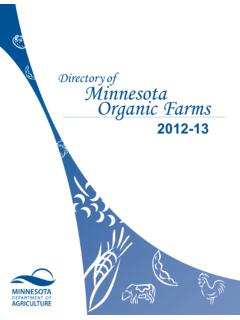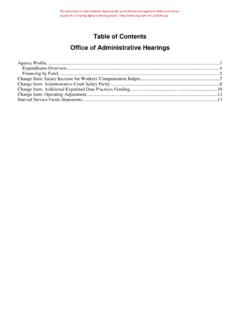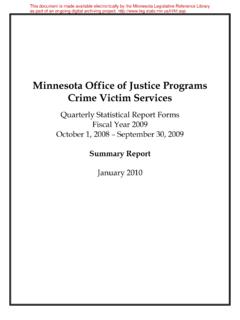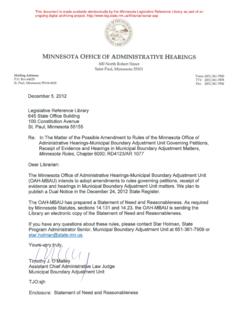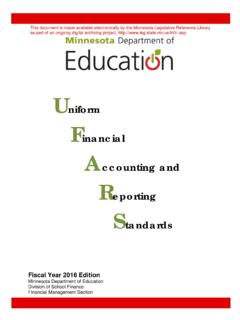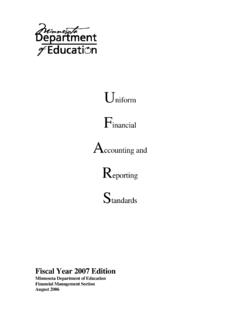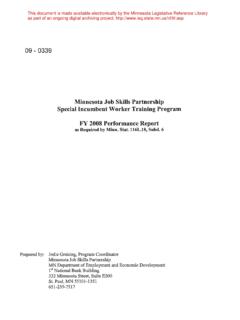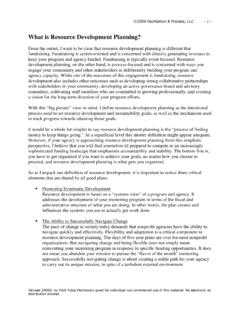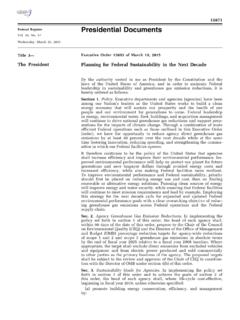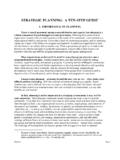Transcription of Minnesota State Planning Agency
1 LEGISLATIVE REFERENCE LIBRARY TH224 .157 -~f ilUrr illr~ i~iif f iii ill~'i11ill~i i iii i iii iii iii ii 3 0307 00047 3671 15 - 1356 Minnesota State Planning Agency AN INTRODUCTION TO CODE ADMINISTRATION AND ENFORCEMENT FOR building OFFICIALS TH /RAFTER SPAN 2"x 4"@24" MAXIMUM IF NOT SUPPORTING ' ,.. FLOOR LOADS 2"x4"PLATE FOUNDATION PLATE FOUNDATION SUBFLOOR~ GIRDER FRAMING OFFICE OF LOCAL AND URBAN AFFAIRS CAPITOL SQUARE building ST. PAUL, Minnesota 55101 This document is made available electronically by the Minnesota Legislative Reference Library as part of an ongoing digital archiving project. January, 1974 The preparation of this publication was financially aided through a federal grant to the State Planning Agency from the Department of Housing and Urban Devel-opment under the Urban Planning Assistance Program authorized by Section 701 of the Housing Act of 1954, as amended.
2 "1 ; l ~ ' 1_ ; ..!.. '' 'r AN INTRODUCTION TO CODE ADMINISTRATION AND ENFORCEMENT FOR building OFFICIALS This training manual has been prepared by the Office of Local and Urban Affairs of the Minnesota State Planning Agency with the cooperation and technical assist-ance of the State building Code Division. The manual is based on a series of training seminars conducted in various municipalities in the State of Minnesota in 1973. It includes information based on questions from the participants as well as faculty presentations. Some of the ma-terial in the "Dealing With The Public" Section is presented by permission of the Association of Minnesota Counties. The purpose of the manual is threefold: first, to assist those desiring to become certified as municipal building officials; second, to be source material for indi-vidual study prior to enrollment in ad-vanced training courses; and third, to serve as a guide to building officials in training their personnel.
3 The manual also includes information required to effectively administer the Minnesota State building Code. Office of Local and Urban Affairs Minnesota State Planning Agency CAPITOL SQUARE building ST. PAUL, Minnesota 55101 ~14 N UBRAR~ A \----A GENERAL INTRODUCTION TO building CODES Major fire losses have been the greatest single impetus for the development of building codes. In fact, the con-stant threat of personal injury or death due to a build-ing failure or inadequate fire and life safety provisions make sound construction procedures essential. building codes, by definition, are "laws, adopted by political subdivisions to regulate the construction, re-pair, alteration, demolition, and occupancy of the struc-ture for the health, safety, and welfare of the general public.
4 " They constitute a set of MINIMUM structural, life safety, and health requirements to protect a build-ing's occupants. There are four "model" building codes in the United states . They were created as models to be adoptable by cities as their building regulations. The oldest of these is the National building Code promulgated by the American Insurance Association (AIA). The first edi-tion was published in 1905. The first edition of the Uniform building Code, written by the International Conference of building Officials (ICBO), was pub-lished in 1927. The Uniform building Code (UBC) is part of the Minnesota State Code. The first edition of the Southern building Code was published in 1945 by the Southern building Code Congress. The Basic building Code was first published in 1950 by the Build-ing Officials Conference of America, predecessor to building Officials and Code Administrators International (BOCA).
5 The minimum building standards contained in the model codes are based on the combined experience of knowledgeable persons in the construction industry, design and engineering professions, fire service, code administration, various institutes representing materials groups, independent testing and research agencies, and others. There are three major categories of building codes: structural stability, life safety, and environmental health. "Structural stability" refers to the quality and design of building materials and assemblies. Chapter 23-28 of the UBC cover structural and construction materials re-quirements. Codes which relate to "life safety" include the Uniform building Code, fire prevention codes, exit codes, Na-tional Electric Code, heating and ventilating codes, and excavating and grading laws.
6 Codes applicable to "environmental health" include the UBC, zoning ordinances, sanitatiOn and plumbing codes, housing, and sign ordinances. building CODES ARE MINIMUM SETS OF STANDARDS. They do not guarantee a functional building -only a safe one. The local building official has a continuing obligation to enforce the building code using his own judgment as to the application of the code's provisions. Generally speaking, if there is a con-flict in the requirements of various codes, the more restrictive rule should apply. Also, a specific require-ment should take precedence over a general one. Thus, it is the local building official's responsibility to analyze the specific situation, research the code, and apply the code as it relates to the situation.
7 THE Minnesota State building CODE The State building Code is a compilation of three State and three national publications. It supersedes all local building codes. If a municipality adopts a new code or changes its existing one, the code has to conform to the State Code. However, the State building Code does exempt from its provisions all farm buildings as well as buildings within municipalities that have never adopted any type of building code. It is important to remember that while the State building Code is the standard for construction, it is also a common sense document which should be applied in a common sense manner. THE State building CODE: CONTENT A. The Uniform building Code ( 1970 edition, as amended). The Uniform building Code is a modern building code and as such attempts to define the end result rather than specify the use of a particular product, material, or method.
8 It is a performance document in the sense that a wide variety of materials can be utilized as long as they meet certain performance criteria. The Uniform building Code is covered in greater detail in the next section. B. The National Electric Code (1971). The Electric Code is a series of American National Standards Institute (ANSI) criteria enforced by the State Board of Electricity through their inspec-tors, and/ or municipal building departments. It is essential that the building official has a close work-ing relationship with the electrical inspector. C. American National Standard and Safety Code for Elevators, Dumbwaiters, Escalators and Moving Walks (1971). This code is also developed by ANSI and is en-forced by the State Department of Labor and In-dustry and/ or municipal building inspection depart-ments.
9 It includes standards for the construction of elevators in single family homes. D. The Minnesota State Plumbing Code (1969). The Plumbing Code was developed by the State Department of Health. It is enforced by their plumbing unit and municipal building departments. In addition to its technical aspects, the code con-tains a series of plumbing principles which the 2 building official should be familiar with. The Plumb-ing Code also contains recommended practices for installation of individual disposal systems. E. State Fire Marshal Rules Providing Accessibility and Usability Features for Physically Handicapped Persons ( 1971). M. S. 4 Et. Seq. requires that all buildings, with the exception of one and two family dwellings, must comply with the State Fire Marshal's Regu-lations.
10 F. Minnesota Heating, Ventilating, Air Conditioning, and Refrigeration Code (SBC 7101 ) . This code, along with all of the other standards in the State building Code, establishes minimum performance criteria for the preservation of the safety, health, and public welfare in this specific area of building inspection. If questions are raised on any part of the State building Code-including amendments-the Commissioner of Administration, pursuant to MS , Subdivision 4, can hold public hearings to clarify the code. EFFECTIVE USE OF THE UNIFORM building CODE: building CLASSIFICATION AND PLAN REVIEW The Uniform building Code classifies a building ac-cording to its location in a fire zone, its occupancy, and its type of construction. These classifications are sum-marized as follows: 1.
